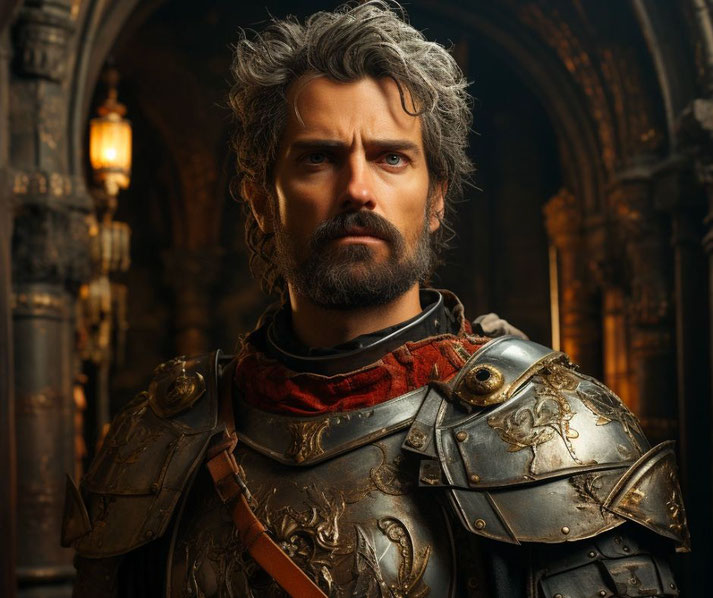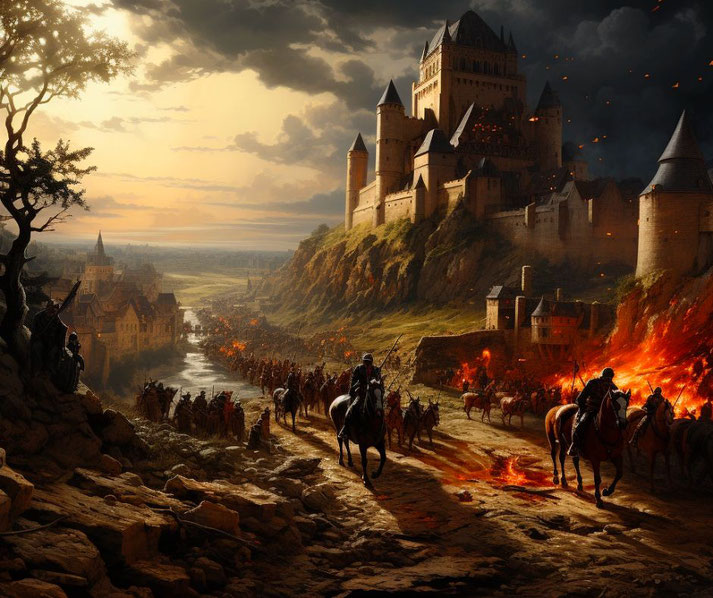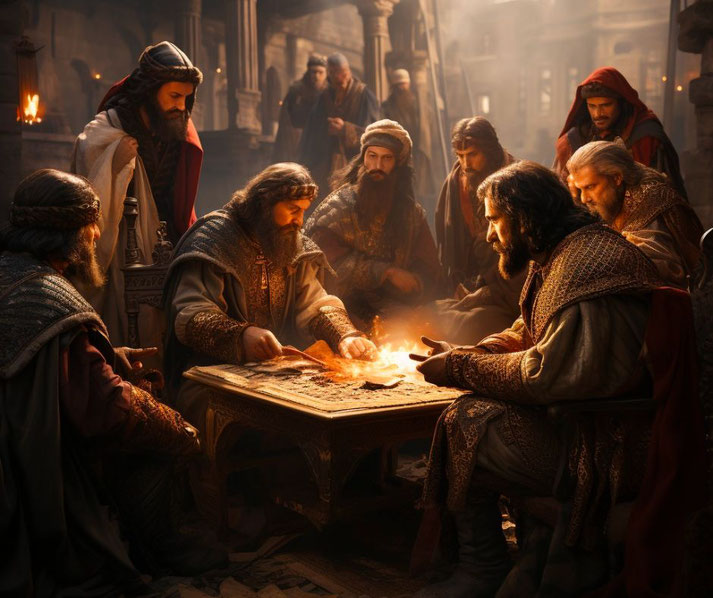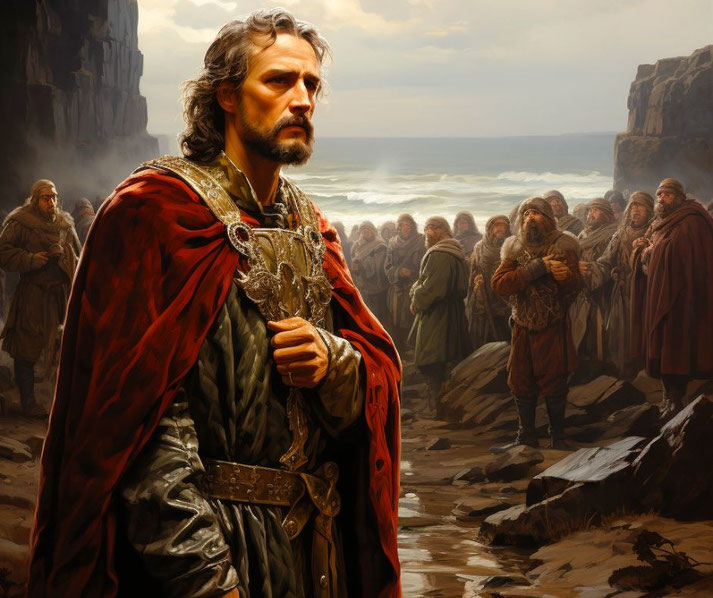Lionheart in the Holy Land: The Crusading King Richard I

King Richard I of England, known as Richard the Lionheart, is one of the most iconic figures of the medieval era, celebrated for his role in the Third Crusade.
His reign, though brief, was a period of intense military campaigns, political intrigue, and a relentless quest for glory.
But what drove him to lead one of the most ambitious Crusades of the Middle Ages?
How did his military strategies and diplomatic maneuvers shape the course of this historic conflict?
And what were the consequences of his actions, both for the Crusader states in the Holy Land and for his own kingdom?
Who was King Richard I?
King Richard I, commonly known as Richard the Lionheart, was born on September 8, 1157, in Oxford, England.
He was the third of five sons of King Henry II of England and Eleanor of Aquitaine.
From a young age, Richard showed a keen interest in military affairs and was noted for his bravery and leadership skills.
His early life was marked by his involvement in the power struggles of his family, known as the Angevin Empire, a vast domain stretching across England and large parts of France.
Richard's ascent to the throne came after the death of his father in 1189. His coronation as King of England on September 3, 1189, was a significant event, but his reign would be dominated by his involvement in the Third Crusade.

The volatile political conditions in the 12th century
The late 12th century was a period marked by significant power struggles, both within Europe and between Christian and Muslim realms.
In Europe, the concept of Christendom, underpinned by the authority of the Papacy, was a unifying force against the backdrop of fragmented political entities.
The Holy Roman Empire, under Emperor Frederick Barbarossa, was a dominant force in Central Europe, while the Angevin Empire, ruled by the Plantagenet kings, held sway over large parts of England and France.
The political situation in England and France was particularly relevant to the Third Crusade.
Richard I inherited a kingdom that was part of the Angevin Empire, an entity that included territories in France such as Normandy, Aquitaine, and Anjou.
This cross-Channel empire was the result of complex feudal relationships and marriages, most notably that of Richard's parents, Henry II of England and Eleanor of Aquitaine.
The situation in the Near East was equally dynamic. The Muslim world was not a monolithic entity but was divided into various factions and territories.
The most prominent figure was Saladin, the Sultan of Egypt and Syria, a leader of Kurdish origin who had risen to prominence by uniting much of the Muslim Near East under his control.
What were the causes of the Third Crusade?
The loss of Jerusalem to Saladin's forces in 1187 was perceived as a profound spiritual defeat for Christendom.
The city was not only a site of immense religious significance, being the location of Christ's crucifixion and resurrection, but also a symbol of Christian unity and power.
The call to arms by Pope Gregory VIII with the papal bull "Audita tremendi" was a clarion call to the Christian world to undertake a sacred mission – a crusade to reclaim the Holy Land from Muslim control.
This religious motivation was further fueled by the promise of indulgences, which offered forgiveness of sins and eternal salvation for those who took part in the Crusade.
The Crusades provided a platform for European monarchs and nobility to expand their influence and gain prestige.
For leaders like King Richard I of England, the Crusade was an opportunity to assert his military prowess and leadership skills.
It also offered a chance to gain control over lucrative trade routes and territories in the Near East.
The Crusades were seen as a means to extend the influence of European Christendom and, by extension, the individual rulers who participated.
Personal motivations also played a crucial role. For Richard I, known as Richard the Lionheart, the Crusade was a matter of personal honor and valor.
His reputation as a warrior king was enhanced by his participation in such a significant military campaign.
The Crusades offered an avenue for knights and nobles to achieve glory and honor in battle, in line with the chivalric ideals of the time.
This quest for personal glory and honor was a powerful motivator, often intertwined with the religious and political objectives.
What did Richard I do during the Third Crusade?
The Third Crusade, which spanned from 1189 to 1192, were marked by significant confrontations and strategic maneuvers, primarily involving King Richard I of England, known for his military acumen and bravery.
The Crusade's primary objective was to recapture Jerusalem, which had fallen to Saladin, the Sultan of Egypt and Syria, in 1187.
Richard I departed from England in July 1190, joining forces with King Philip II of France and other European crusaders.
Their journey to the Holy Land was fraught with challenges, including a shipwreck near Cyprus in May 1191.
Richard's subsequent conquest of Cyprus was a strategic victory, providing a valuable supply base for the Crusaders.
The first major engagement in the Holy Land was the Siege of Acre, which began before Richard's arrival and lasted until July 1191.
The city, under Muslim control, was a strategic coastal stronghold. Richard's arrival played a crucial role in the siege, bringing renewed vigor and resources to the Crusader forces.
The siege ended with the surrender of the Muslim garrison, marking a significant victory for the Crusaders and a morale boost for their campaign.
Following the capture of Acre, Richard led his forces south, towards Jaffa and Jerusalem.
The march was marked by the Battle of Arsuf on September 7, 1191, a pivotal moment in the Crusade.
Richard's army, while moving along the coast, was attacked by Saladin's forces.
In a display of military prowess, Richard managed to maintain the cohesion of his army and counterattacked decisively, securing a crucial victory that bolstered the Crusader position in the region.

The objective of recapturing Jerusalem proved elusive. Richard led his forces within sight of Jerusalem but decided against laying siege to the city, considering the logistical challenges and the likelihood of a successful counterattack by Saladin.
This decision was met with disappointment and criticism from some Crusaders, who saw the capture of Jerusalem as the Crusade's primary goal.
The Crusade's final significant military engagement was the Battle of Jaffa in 1192.
Saladin's forces captured Jaffa, but Richard swiftly recaptured the city in a surprise attack, demonstrating his tactical skill and bravery.
This victory, however, did not significantly alter the strategic situation.
Tensions within the Crusader camp
Richard's relationship with King Philip II of France was strained, marked by rivalry and mistrust.
Both kings had inherited a legacy of conflict over territories in France, and this rivalry extended into the Crusade.
Despite their common goal, tensions between Richard and Philip hampered the effectiveness of the Crusader alliance.
Their discord became evident during the Siege of Acre, where disagreements over strategy and division of spoils surfaced.
Philip eventually left the Holy Land in August 1191, partly due to ill health and partly due to these ongoing disputes, leaving Richard as the undisputed leader of the Crusade.
In addition to his interactions with Philip, Richard also had to manage relations with other European nobles and Crusader leaders, such as Duke Leopold of Austria.
The relationship between Richard and Leopold deteriorated significantly during the Crusade, culminating in an incident at Acre where Richard's men removed Leopold's banner from the city.
This affront would later have serious consequences for Richard, leading to his capture and imprisonment by Leopold on his journey back to England.
However, Richard's diplomatic efforts were sometimes undermined by his impulsive nature and focus on military solutions.
His decision to capture Cyprus, for instance, was driven more by military opportunism than diplomatic strategy.
Similarly, his insistence on military campaigns over diplomatic settlements in certain situations led to missed opportunities for a more lasting peace in the region.
Richard's interactions with Saladin
Richard's diplomatic skills were also tested in his dealings with Saladin. Despite being adversaries, there was a mutual respect between the two leaders.
Their military engagements, while fierce, were often marked by chivalric gestures and a certain code of honor.
For instance, when Richard fell ill, Saladin sent him gifts of fruit and ice to aid his recovery, a gesture of respect to a worthy opponent.
The negotiations that led to the Treaty of Jaffa in 1192 were a testament to the diplomatic acumen of both leaders.
While it fell short of the ultimate goal of reclaiming Jerusalem, it was a realistic acknowledgment of the situation on the ground and secured several key concessions.

The military campaigns of the Third Crusade concluded with this treaty, which took effect in September 1192.
The treaty established a three-year truce between the Crusaders and Saladin's forces.
It allowed the Crusaders to retain a strip of territory along the coast from Tyre to Jaffa and granted Christian pilgrims safe access to Jerusalem, which remained under Muslim control.
As a result, the Third Crusade did not achieve its ultimate goal of recapturing Jerusalem, but it demonstrated the military capabilities of leaders like Richard the Lionheart and highlighted the complexities of medieval warfare.
Richard's return to England
King Richard I's return to England in 1194, after his participation in the Third Crusade, marked the beginning of a new phase in his reign, characterized by efforts to consolidate his power and address the challenges that had arisen during his absence.
In December 1192, while traveling through Europe in disguise, Richard was captured near Vienna by Duke Leopold of Austria, whom he had offended during the Crusade.
This capture led to his imprisonment and a subsequent handover to Emperor Henry VI of the Holy Roman Empire.
Richard's captivity became a significant European event. A ransom was set at an enormous sum of 150,000 marks, equivalent to twice the annual revenue of the English crown.
To raise this amount, taxes were increased and treasures were sold, placing a heavy burden on England and his other territories.
After the ransom was paid, Richard was released in February 1194 and returned to England, where he was welcomed as a hero.

Upon his return, Richard found his kingdom in turmoil. In his absence, his brother John had attempted to seize power, and the kingdom was fraught with internal strife and rebellion.
Richard set about reasserting his authority, fortifying his position in England and his territories in France.
He embarked on a series of military campaigns to regain the territories lost to the French king, Philip II.
These campaigns were characterized by the same military skill and leadership that Richard had demonstrated during the Crusades.
Richard's later reign was largely focused on these campaigns in France, as he sought to strengthen the Angevin Empire.
He spent very little time in England, instead concentrating on warfare and administration in his continental possessions.
His efforts were largely successful, and he managed to recover much of the territory lost to Philip II, including important fortresses and lands in Normandy.
However, Richard's reign was cut short by an unexpected event. In April 1199, while laying siege to the castle of Châlus-Chabrol in Limousin, France, he was struck by a crossbow bolt.
The wound became gangrenous, leading to his death on April 6, 1199. Richard's death brought an end to a reign that, while short, was marked by significant military and political activity.
Richard's legacy was a mixed one. He was remembered as a courageous warrior and a skilled military leader, particularly for his role in the Third Crusade.
However, his frequent absences from England and the financial burdens placed on his subjects to fund his military campaigns and ransom left a more complex legacy at home.
His death led to the ascension of his brother John to the throne, a reign that would see the continuation of many of the challenges Richard had faced, ultimately leading to the signing of the Magna Carta in 1215.
What do you need help with?
Download ready-to-use digital learning resources
Copyright © History Skills 2014-2025.
Contact via email
With the exception of links to external sites, some historical sources and extracts from specific publications, all content on this website is copyrighted by History Skills. This content may not be copied, republished or redistributed without written permission from the website creator. Please use the Contact page to obtain relevant permission.





